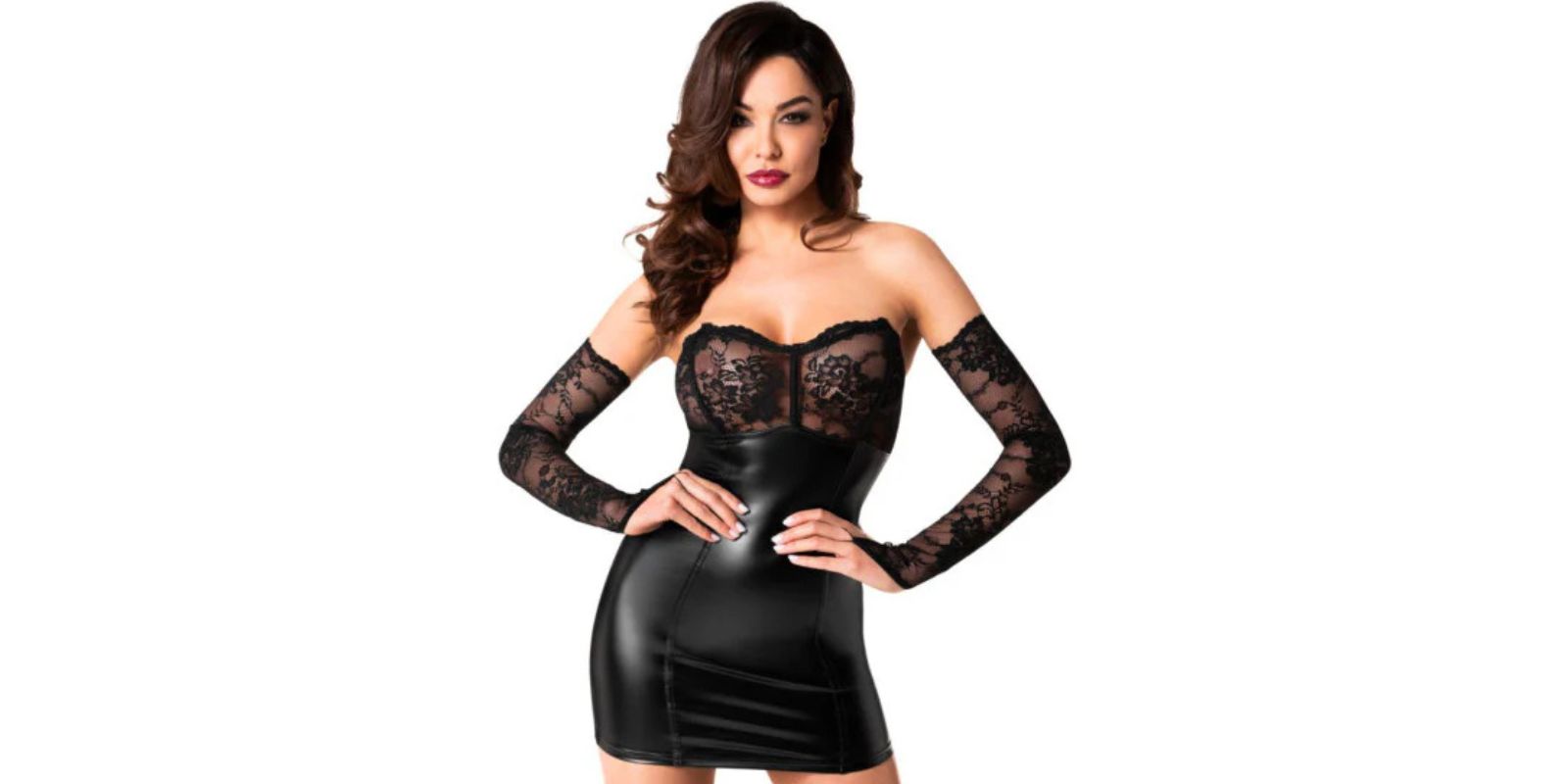Clothing and Fetish: Latex, Rubber & Sensation Play
Clothing and fetish cover a wide range of dress-focused erotic interests, with latex and rubber often described as a shiny “second skin.” This article explains why latex is popular in fetish and fashion scenes, how it feels and cares for it, and practical tips for safe, sensual wear. Clothing and Fetish is the key phrase woven throughout to improve discoverability and clarity.
Table of Contents – Clothing and Fetish
- Overview: Clothing and Fetish
- Latex & Rubber Fetish Explained
- Wearing Latex: Sensation & Ritual
- Dry Latex — Tips for Comfort
- Latex Polish & Care Instructions
- Storage & Metal Trim Warnings
- Recommended Fetish Product
- FAQs
- Your Latex Look, Reframed
Clothing fetishism is a form of sexual attraction where arousal is tied to specific garments, fabrics, or uniforms rather than the body alone. Unlike casual appreciation of fashion, a fetish becomes a recurring or exclusive focus essential for sexual excitement. Common examples include latex, leather, lingerie, stockings, or uniforms, each offering unique visual, tactile, and psychological appeal. Clothing fetishes often intersect with themes of kink, power dynamics, fantasy, and sensory play, making them a significant part of modern fetish culture.

Overview: Clothing and Fetish
Clothing-focused fetishes treat certain garments or materials—like latex, rubber, PVC—as the erotic object rather than (or in addition to) the person wearing them. The shiny, body-clinging look of latex emphasizes silhouette and movement, creating strong visual and tactile appeal that appears across fetish communities and mainstream fashion alike. For background on the broader topic, see this overview of clothing fetishism.
Clothing fetishes often go beyond simple attraction to style—they tap into deeper psychological layers of identity, power, and transformation. For some, wearing fetish garments can feel like stepping into an empowered role or persona, while for others, the act of watching or touching these materials heightens arousal. The crossover between fetishwear and high fashion shows how powerful these aesthetics are, blurring the line between erotic expression and cultural statement.
Latex & Rubber Fetish
Latex is often called a “second skin” because it molds to the body and highlights contours. It comes in many thicknesses, colors, and finishes—each creating distinct visual and sensory experiences. Some fetishists are drawn to the erotic look; others engage in ritualistic dressing (some communities refer to themselves as rubberists) and complex role-play that centers on the clothing itself. This cultural crossover explains why latex also shows up on runways and nightlife scenes.
Part of the allure of latex and rubber lies in their sensory qualities—the tightness, the sound of stretching, and the unique scent that accompanies the material. Dressing in latex can evoke feelings of transformation, confinement, or heightened sensuality, which makes it especially powerful in role-play and BDSM contexts. Maintenance is also part of the ritual, as latex requires polishing and care to preserve its glossy sheen, adding another layer of intimacy and dedication for enthusiasts.
Why the material matters
- Visual impact: high shine and a smooth surface emphasize form and movement.
- Tactile feedback: tightness and temperature changes (warmth from body heat, rapid cooling when exposed) add to sensation play.
- Ritual and identity: for many, donning latex is part of preparation and scene-building rather than a purely sexual act.
For opinion and cultural perspectives on fetish clothing, this piece explores social reactions and personal experience in marked contexts. Cultural commentary can be helpful when situating personal interest in broader trends.
Wearing Latex: Sensation & Ritual
Many wearers describe latex as feeling hugged or compressed—comforting to some, exposing to others. Because the material is thin, it amplifies vulnerability and intimacy: every curve and movement is visible. Sensation play (e.g., alternating warm and cool touches) becomes more pronounced because latex conducts temperature quickly.
For many fetishists, the act of dressing in latex is as important as wearing it. Lubricants or powders are often needed to slip into the tight material, turning the process into a slow, ritualistic experience that builds anticipation. Once dressed, the glossy surface transforms the wearer’s appearance into something striking and otherworldly, enhancing feelings of erotic power, submission, or transformation. This ritual of preparation, combined with the heightened physical sensations, makes latex a deeply immersive fetish experience.
Practical tips for first-timers
- Try garments on over bare skin first to gauge fit and comfort.
- Practice simple movements at home to test range of motion and breathability.
- Communicate with partners about triggers, boundaries, and escape plans if the outfit becomes uncomfortable.
Dry Latex — Getting In & Out
“Dry” latex—the classic, non-lined variety—can create significant friction when dressing. Popular methods for easing entry include using a water-based or silicone lubricant, or a light dusting of talc or cornstarch. Note: powders can leave residue that must be cleaned before polishing.
Removing dry latex also requires care, since tugging too hard can tear seams or overstretch delicate areas. Slowly peeling the garment away while using a bit of water or lube helps reduce friction and prevent damage. Once removed, garments should be rinsed and dried thoroughly before storing flat or hung in a cool, dark space. Proper handling not only extends the life of latex pieces but also preserves their sleek, iconic look for future wear.
Donning steps (quick)
- Prepare: hands clean, nails trimmed; have lubricant or powder ready.
- Apply: small amounts of lubricant or talc to skin or inside garment—work gradually.
- Adjust: ease garment into place slowly to avoid tears.
Latex Polish & Care Instructions
After polishing, allow the garment to air out before wearing or storing, as trapped moisture or excess product can weaken latex over time. Always wash garments in lukewarm water with a mild soap after use, pat them dry with a soft cloth, and store away from sunlight or metal contact, which can cause discoloration. Hanging latex on padded or wide hangers prevents creasing, while lightly dusting with talc or storing in garment bags helps maintain flexibility. With proper care, latex pieces retain their signature shine, stretch, and allure for years.
Clothing and Fetish- Latex polish restores the glossy finish many wearers want. Use a dedicated latex shine product sparingly and avoid letting polish pool in folds (this can degrade the material). After wearing:
- Turn the garment inside out and wipe away talc or sweat.
- Allow to air dry completely before storing.
- Polish lightly if needed; buff with a soft cloth for even shine.
Storage & Metal Trim Warnings
Store latex in a cool, dark place—exposure to sunlight causes fading and material breakdown. Light-colored latex is vulnerable to staining from metals; avoid close contact with copper, nickel, or uncoated metal trims. Use tissue paper between metal accents and latex surfaces when storing to prevent transfer marks.
Clothing and Fetish – Latex should also be kept away from oils, perfumes, and sharp objects, as these can permanently damage the material. When storing multiple garments, avoid folding them tightly together—use garment bags or wrap individual pieces in soft cloth or tissue to prevent sticking and color transfer. For long-term preservation, rotate pieces occasionally and reapply a light dusting of talc or protective polish. These simple precautions help maintain both the integrity and the striking visual appeal of latex clothing.
Recommended Product
Noir Handmade Harmonia Mini Fetish Dress

For readers interested in a ready-made latex look, the Harmonia mini dress is a crafted option that demonstrates the glossy aesthetic and silhouette-defining shape typical of fetish wear. It’s a useful starting point for people who want a wearable, fashion-forward piece that translates easily from club styling to private scenes. (Product link provided for convenience.)
FAQs – Clothing and Fetish
Is latex safe to wear against the skin?
Yes for most people—but check for latex allergy first. Patch test small areas and avoid prolonged wear if irritation appears.
How do I remove talc or polish residue?
Turn the garment inside out and wipe with a soft cloth and mild soap, rinse, and air dry—never tumble dry or expose to heat.
Can latex be combined with other fetish materials?
Absolutely. Layering latex with leather or fabric trims is common; just take extra care with fastenings and metal pieces to avoid abrasion.
Your Latex Look, Reframed
Whether you see latex as fashion, fetish, or both, it’s a versatile material that invites careful exploration. Respect the ritual—fit, preparation, safe donning, and cleaning all matter. With attention to safety and style, latex and rubber clothing offer a thrilling way to express identity, play with sensation, and shape intimate scenes.




You must be logged in to post a comment.